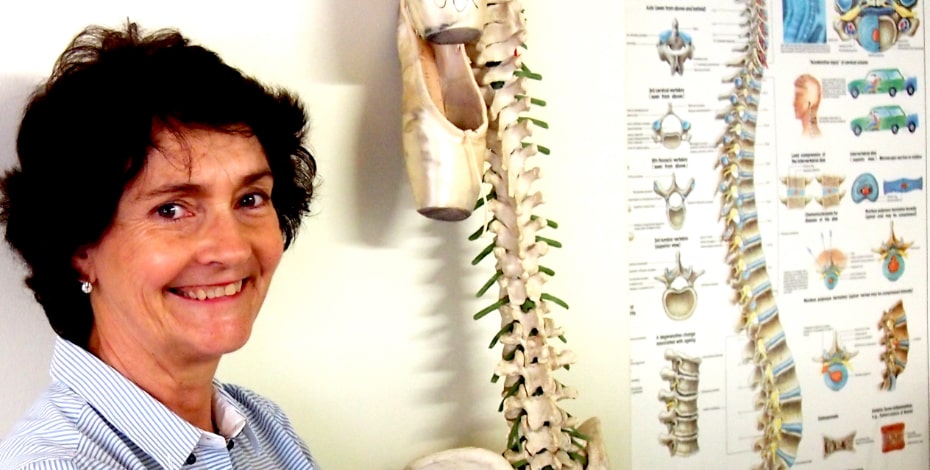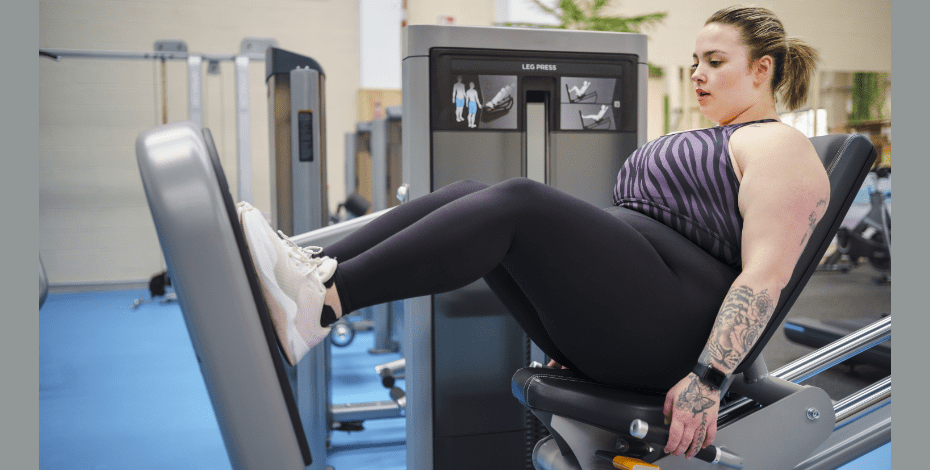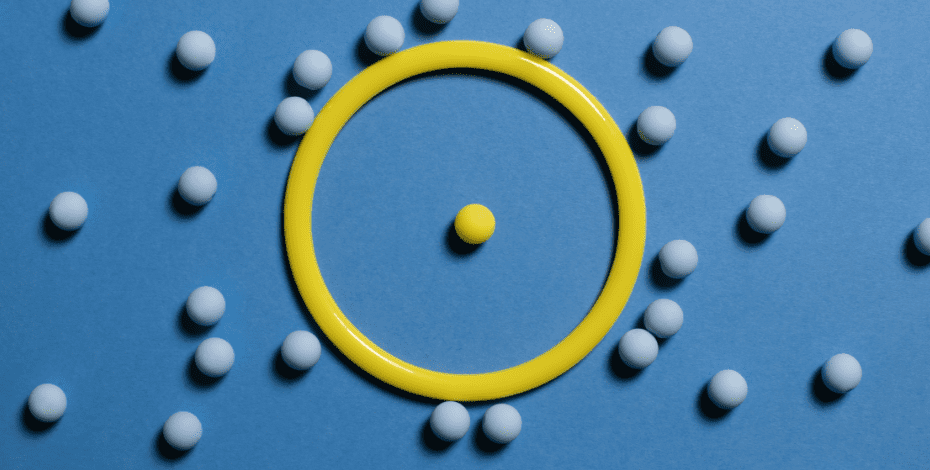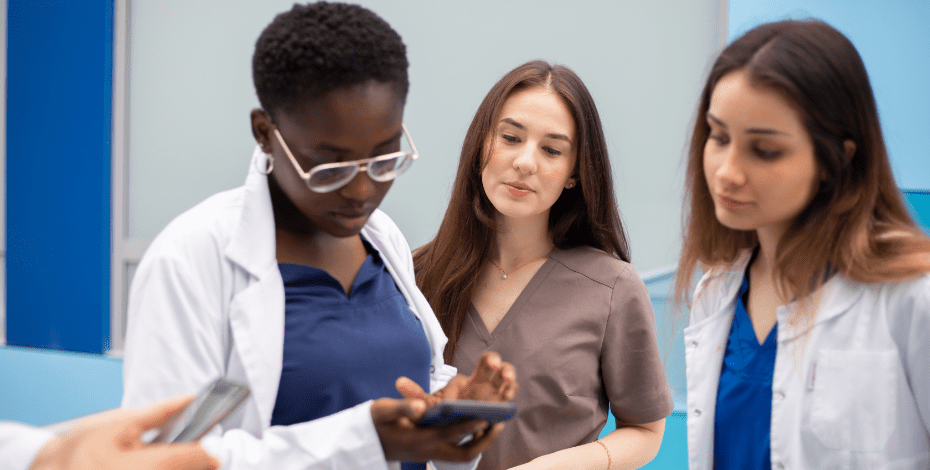
Flying the flag for dance physiotherapy

PROFILE: It might have been exit stage left from her six-year, three-term position on the Board of the International Association for Dance Medicine & Science (IADMS), but the show is certainly not over for Debra Crookshanks.
When her marine engineer father slipped on a ladder rung, fracturing his patella and femur while out at sea, a very young Debra Crookshanks understood the impact of injury on the family. With his femur broken and his patella ‘resembling party ice’ as his doctor had noted, Debra’s father came home to his family in a full-length cast. He was off work for six months, and when it came time for his first physiotherapy session, his young daughter was uncertain about how helpful it would be.
‘Dad left in the taxi for his first physio appointment—and we had no idea what to expect,’ Debra says. ‘On his return, he got out of the taxi with the sawn-off plaster under his arm, walking almost normally. I thought “that is a miracle” and decided then and there that I wanted to be able to do that for people.’
Rewind a few years and while a pupil at Saint Thomas Moore Catholic Primary School in Brighton-Le-Sands, a bayside suburb of Sydney on the western side of Botany Bay, Debra is exploring her extra curricular love of Irish dancing and is nurturing more than a passing interest in ballet. Perfecting the great leaps required in Irish dancing has seen Debra compete at a state level, while the flexibility required with classical ballet has contributed to the elevations required, igniting a passion for dance that she carries to this day.
These two critical experiences in her childhood combined at a time when Debra was mapping out her career pathway, and she found herself drawn towards physiotherapy. It was the late ’70s when Debra graduated from the then-Cumberland College of Health Science with her Bachelor of Applied Science (Physiotherapy) degree, but all through university she had continued to dance as well as discovering a passion for popular disciplines of the time—belly dancing and yoga, often instead of going to the library.
The fluidity and biomechanics of human movement has long been of special interest in Debra’s evolving career.
Following residency at The Mater Hospital in Newcastle, then a brief time spent in paediatric neurology at the Cerebral Palsy Alliance NSW, and a postgraduate sports course at the University of Queensland, Debra began working in private practice with an emphasis on musculoskeletal and sports physiotherapy before completing a postgraduate diploma in manipulative therapy at the University of Sydney in 1988. The postgraduate level of study, she says, afforded her a solid foundation of knowledge from which to build her foray into dance physiotherapy—combining with her experience in paediatric neurology, musculoskeletal and sports medicine.
'It is not helpful for a classical ballet dancer recovering from a hamstring-origin strain to be told “Great, you have recovered 90 degrees hamstring range, that’s all good” when the other leg has 160 degrees.' - Debra Crookshanks
‘My postgraduate manual therapy training provided me with skills of assessment and palpation, a fastidiousness of feeling what the joint is doing, of being able to find the subtleties of joint movement, identify directional restrictions, to be a better clinician. I think that stood me in really good stead,’ Debra says. ‘And knowing that when the dancer presents for assessment and treatment of a dance-related injury, you never just treat the injury. You must look at why it occurred. Consider what is going on in the pelvis, what’s going on in the spine, biomechanical asymmetries, muscle imbalances or weakness. My training both in sports, musculoskeletal and manips really engendered a thoroughness to my clinic skills in the dance arena.
‘It is also important to understand the style of dance the dancers are working in. You absolutely need to know what is required of them in their chosen style. It is not helpful for a classical ballet dancer recovering from a hamstring-origin strain to be told “Great, you have recovered 90 degrees hamstring range, that’s all good” when the other leg has 160 degrees. When the dancer needs to do jetes [ballet leaps] and grand battement devant [big kicks to the front], 90 degrees is not enough.’
After the graduate diploma of manipulative therapy in 1988, Debra was invited to work with Greg Schneider, FACP, who was providing physiotherapy to the Australian Ballet Company during their Sydney seasons. Debra took on the dance portfolio when she joined his practice. For six years, she worked with the Australian Ballet Company along with the Sydney Dance Company and various companies touring Australia during their Sydney seasons. She also began teaching anatomy at the Royal Academy of Dance on their teacher training courses.
It was around this time that the University of New South Wales was setting up a dance degree, and Debra was invited to write the syllabus for the new course—a Bachelor of Arts (Dance), Bachelor of Education, as well as present the anatomy subjects, a tenure lasting 17 years. This spurred her on to research injuries in Australia’s professional dance population as part of completion of a Master of Science (Physiotherapy).
‘While working with Ausdance NSW, I asked if I could be involved with some research and, at the time, they were looking to do a further Safe Dance report. They already had Safe Dance I by Tony Geeves, which was in the Australian professional dance population, and Safe Dance II in the adolescent population,’ Debra says. ‘The board agreed to my commencing research for Safe Dance III, a follow up to the original report into injuries in Australia’s professional dance population. When it was published the report was distributed worldwide.
‘Through my research it became absolutely apparent that dancers were accessing physiotherapists for their injuries and advice—63 per cent of all the dancers reported physiotherapists as the people they trusted the most and would go to for their injury management,’ Debra says. ‘My thought was if dancers are putting their trust in physiotherapists, we need to give them the best care possible. I approached the APA to establish the dance physiotherapy special interest group, as it was called then to provide interested physiotherapists with access to ongoing education and management of dancers and dance injuries.’
With colleagues Susie Bond and Kate Roberts, Debra became chair of the state dance group and co-wrote Dance Physiotherapy Level 1 and Level 2 PD courses, and began inviting eminent physiotherapists to assist in presenting the courses. Debra was then inspired to open her own practice. Establishing the dedicated dance physiotherapy practice, The Dancers Clinic, at The McDonald College of Performing Arts in 2000, Debra provided sessional physiotherapy for touring ballet, musical theatre and performing arts companies. That practice was incorporated into a second dance-focused physiotherapy private practice—Balgowlah Spinal Sport & Dance Physiotherapy—which Debra opened two years later, in 2002, and subsequently sold in 2015, remaining on staff in the practice.
Prior to the evolution of her practices, Debra had presented the findings of the Safe Dance III Report at the 7th annual IADMS conference in Hertfordshire, in the United Kingdom, in 1999. This opened up new opportunities for her to explore other avenues within the professional body.
‘I presented at IADMS because it was the only international dance medicine association at the time and it had huge credibility. I presented and became a member at the same time, realising how fantastic it was, this amazing sharing of knowledge from all around the world, across all disciplines, and I became actively involved,’ Debra says. ‘I was sitting next to this friendly chap after my presentation, we got chatting and he seemed to know a lot about dancers and dance medicine so I asked him “What do you do?” and he replied that he was a chiropractor from New York. I thought this is really nice; chiros and osteos, physios, surgeons, physicians, dancers, dance teachers all coming together for the greater good of dance medicine.’
Debra continued to attend IADMS conferences in the UK, the US, Europe and Asia on a regular basis both as presenter and invited speaker. At the Singapore conference in 2012, she was approached by members of the IADMS board to see if she was interested in joining the board. In 2013, via popular vote from members internationally, Debra was elected to the board. Her directorship was to last three terms, the maximum allowable in one continuous service, with Debra stepping down late last year. Around this time she decided to stay on with IADMS, accepting the role of chair of the ethics committee.
‘I was disappointed to be stepping away. I’ve really enjoyed the governance, ethics and medical literacy roles that I’ve had in IADMS at the board level,’ Debra says. ‘At the most recent board meeting…I was proposed and elected as chair of the ethics committee, which I’m delighted about. It’s a big job, and we have already dealt with two very delicate situations. I plan to undertake this new role for two years and then see what happens after that,’ Debra says of whether she will seek re-election to the board in 2022.
Throughout her long career Debra has remained a loyal member of the APA, having joined when she graduated in 1980. In 2006, Debra received a New South Wales branch award for professional excellence in recognition of service to the Sports and Exercise Group and the Dance Network.
‘Physiotherapy is a diverse profession which offers you so many different avenues of endeavour, allowing you to choose the area you love and where you want to be professionally. Physiotherapy provides career paths for clinicians, academics and researchers—no-one should ever be bored in physiotherapy.’
Of her work with the Dance Network, Debra says ‘if you can give back to the profession by volunteering, then I think it’s a really good thing to do.'
© Copyright 2024 by Australian Physiotherapy Association. All rights reserved.






